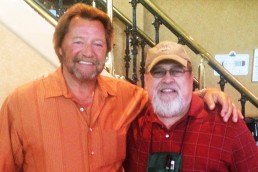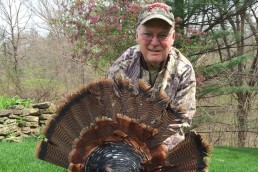Move Closer for Good Outdoors Photos
SHARE THIS POST
What makes a good outdoor photograph?
The advances in photographic technology the past decade have been as amazing as those within the computer industry. Everything is automatic: all you do is point and shoot. Even disposable cameras can give you perfectly exposed images with brilliant color. It’s so easy now anyone can do it, and maybe that is why nearly every outdoorsman I talk with carries a camera to record that special catch or kill, or scene or sunset.
But was makes a good outdoor photograph the same as it was when I first started taking and selling outdoor pictures over 40 years ago is what is loosely referred to as “composition.” Though the focal length of lenses do have something to do with it, composition refers to what you include in the picture, so the difference between a so-so snap shot and a good photograph is still primarily up to the photographer. More than anything, distance from the subject is what separates a snapshot from a good photograph. On smaller, less expensive or disposable cameras, the focal length is very wide. So for a good shot you need to get very close. Generally, the shorter the focal length of your lens the closer you have to move to the subject to fill frame. (Focal length is printed or stamped on the lens, usually inside the front lip.)
The real problem is that a lens doesn’t see things the way we do. When we look at a person, for example, we might concentrate on their facial features or what they’re holding in their hands. When our eyes survey a scene, the mind has a way of isolating the important features and ignoring the rest. A lens, on the other hand, doesn’t concentrate. It sees everything equally and all that other stuff all the way out to every edge of the frame only distracts from the important part of the picture. So, don’t stand back and admire; move in and record. Make it bigger than life and decide what is the most important part of the picture. Then, move in until you fill the frame with it. Without getting technical about professional techniques to achieve “special effects,” moving closer is the best way to get the same dramatic effect that our selective brains do though the concentrated focus of our eyes.
Are you enjoying this post?
You can be among the first to get the latest info on where to go, what to use and how to use it!
To fully understand what I’m emphasizing, try this little experiment:
As the subject, just use a willing participant. Take the first picture from the distance of most snapshots. Leave plenty of room above and below him or her so that you are sure you get all of their head and their feet in the shot, just like most people do for snapshots. Move half that distance closer to the subject and take another exposure. This time, forget about the feet; concentrate upon centering the subject left to right and leave just a little space above the head. Then close half that distance and make another exposure, concentrating upon the same framing, this time turning the camera vertically so that you will have a horizontal and a vertical of that distance to compare. Finally, move so close that all you have in the frame is the head and shoulders of the person. Take a horizontal, and then flip the camera to take a vertical of only the person’s head.
When you get your pictures back, the impact of the closer shots will be so obvious that you’ll never stand back again.
MWO
SHARE THIS POST
Did you enjoy this post?
You can be among the first to get the latest info on where to go, what to use and how to use it!
Ron Kruger
Ron Kruger has been communicating the outdoor experience for more than four decades. He has worked as a full-time guide for trout on the North Fork, for crappies and bass on Kentucky Lake and for smallmouths on the Current River. He has served as editor of three outdoor magazines, and owns a patent on a fly/lure called the Desperate Diver.



